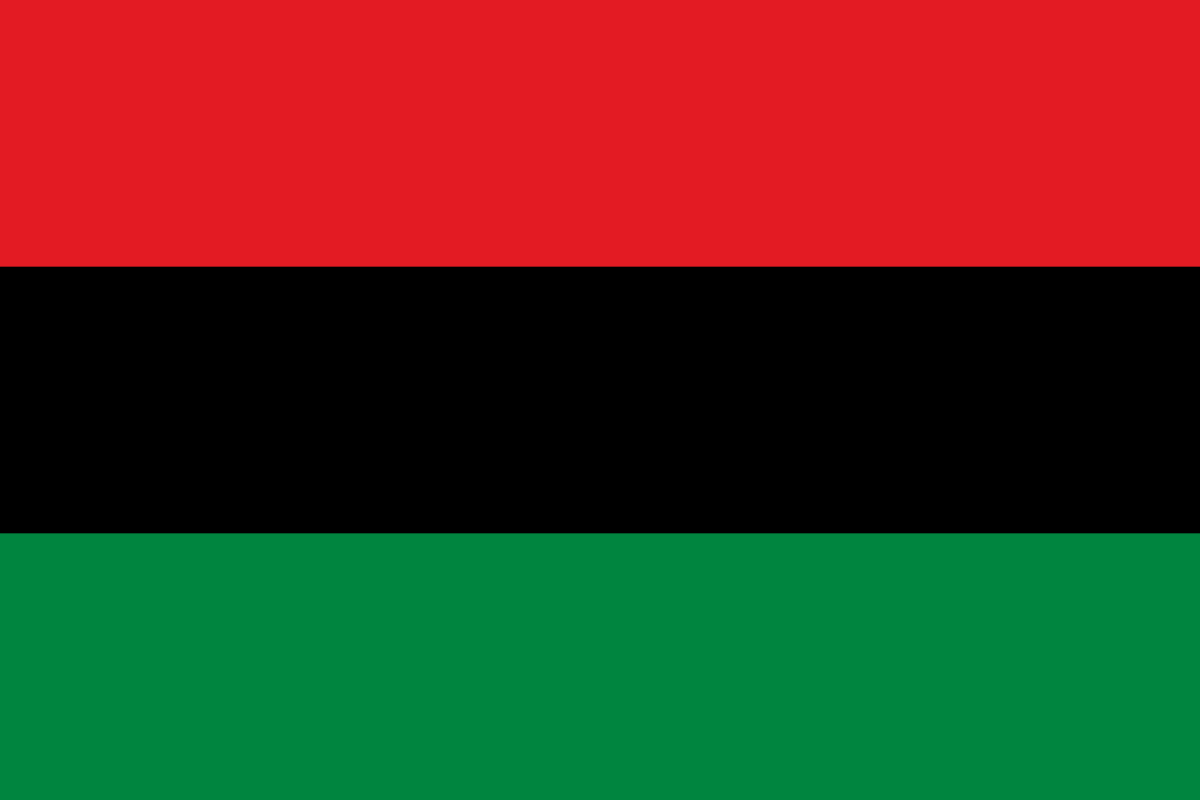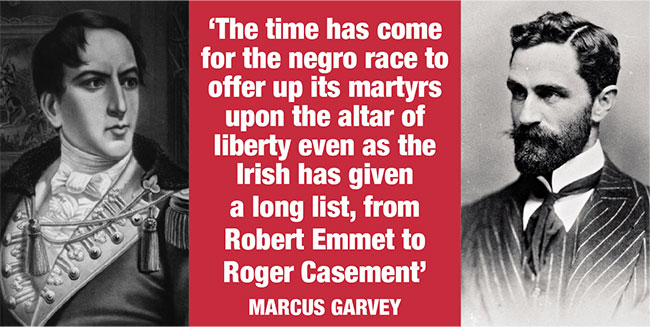@invalid Marcus Garvey was a huge fan of the irish, sure did volunteer up the entire black population of earth to "be in service"
sure did write letters to the king of england in support of them.
Sure did name his base of operations after theirs.

I know him and Kool Herc are part of Jamaicans' "legitimacy" in our affairs, and you want to throw around terms like "NEW BLACK" to keep the old pan african scam/confusion going on but we're not living in the 1950s or 60s. There are more black economic migrants living all around us showing African American who they really are. IT'S OVER.
"Marcus Garvey had an amazing career by any standard. He was Jamaica’s first ever designated national hero who today lies buried in the National Heroes Park in Kingston, the capital. Here in Ireland – and indeed in Jamaica – there is little popular knowledge or appreciation of how this major Jamaican figure was so strongly influenced by Ireland, and especially by the Easter Rising.
As Irish Ambassador to Jamaica, I was first drawn to Garvey by his Irish surname and also when I learned that he had named one of the most prominent buildings in Kingston, Liberty Hall.
Despite the Irish surname, the Garveys acquired their family name from an Irish slave owner. The plantation Garveys were from Ireland. In 1922, Marcus Garvey said:
“An Irish slave-master gave my forbear the name Garvey. He was not allowed to pass his African name to us.”"
Garvey never strayed far from Irish matters. Just as the 1916 Rising had inspired him, Garvey also had great respect for Irish prisoners on hunger strike.
As Terence MacSwiney’s hunger strike went on and world media attention turned to it, Garvey sent a message to Father Dominic, MacSwiney’s confessor, asking him to pass on to the hunger striker the sympathy of 400 million negroes. He also sent a telegram to the British Prime Minister, asking him to intervene and save MacSwiney’s life. Garvey also understood the powerful symbolism of a man sacrificing his life for a cause through a hunger strike. When MacSwiney died after 74 days on hunger strike, Garvey said:
“Hundreds of thousands of Irishmen have died as martyrs to the cause of Irish freedom . . . I believe that MacSwiney did more for the freedom of Ireland today than probably anything they did for 500 years prior to his death.”
As the Tan War in Ireland grew intense, Garvey continued his efforts to support the Irish side.
After meeting an Irish-American delegation in New York, he sent one of his lieutenants, Reverend Selkridge, to the New York docks, asking black longshoremen to join their Irish-American colleagues in boycotting British ships. This cemented Garvey’s relationship with Irish republican leaders.
The forerunner of the FBI also had their eyes on Marcus Garvey.
Garvey developed a strong relationship with Éamon de Valera, the political leader on the Irish side. Garvey organised a joint meeting in 1920 where both men were due to speak. Garvey was advertised as “Provisional President of Africa” and de Valera as “Provisional President of Ireland”. Unfortunately, the meeting was cancelled. When de Valera returned to Ireland and the Truce was announced, Garvey cabled Dev:
“We, the representatives of 400,000,000 negroes of the world . . . send greetings and pray that you and your fellow countrymen will receive from the hands of the British your merited freedom.”
Garvey also created a flag for the UNIA in 1920 at the height of the Tan War. The colours are black, red and green. The green was to signify support of the Irish cause. The flag formed the basis of the national flags of several African and Caribbean countries. It is also carried by members of the “Black Lives Matter” movement at demonstrations in the USA but I doubt if many of the participants know about the Irish linkage.


 I know him and Kool Herc are part of Jamaicans' "legitimacy" in our affairs, and you want to throw around terms like "NEW BLACK" to keep the old pan african scam/confusion going on but we're not living in the 1950s or 60s. There are more black economic migrants living all around us showing African American who they really are. IT'S OVER.
I know him and Kool Herc are part of Jamaicans' "legitimacy" in our affairs, and you want to throw around terms like "NEW BLACK" to keep the old pan african scam/confusion going on but we're not living in the 1950s or 60s. There are more black economic migrants living all around us showing African American who they really are. IT'S OVER.
